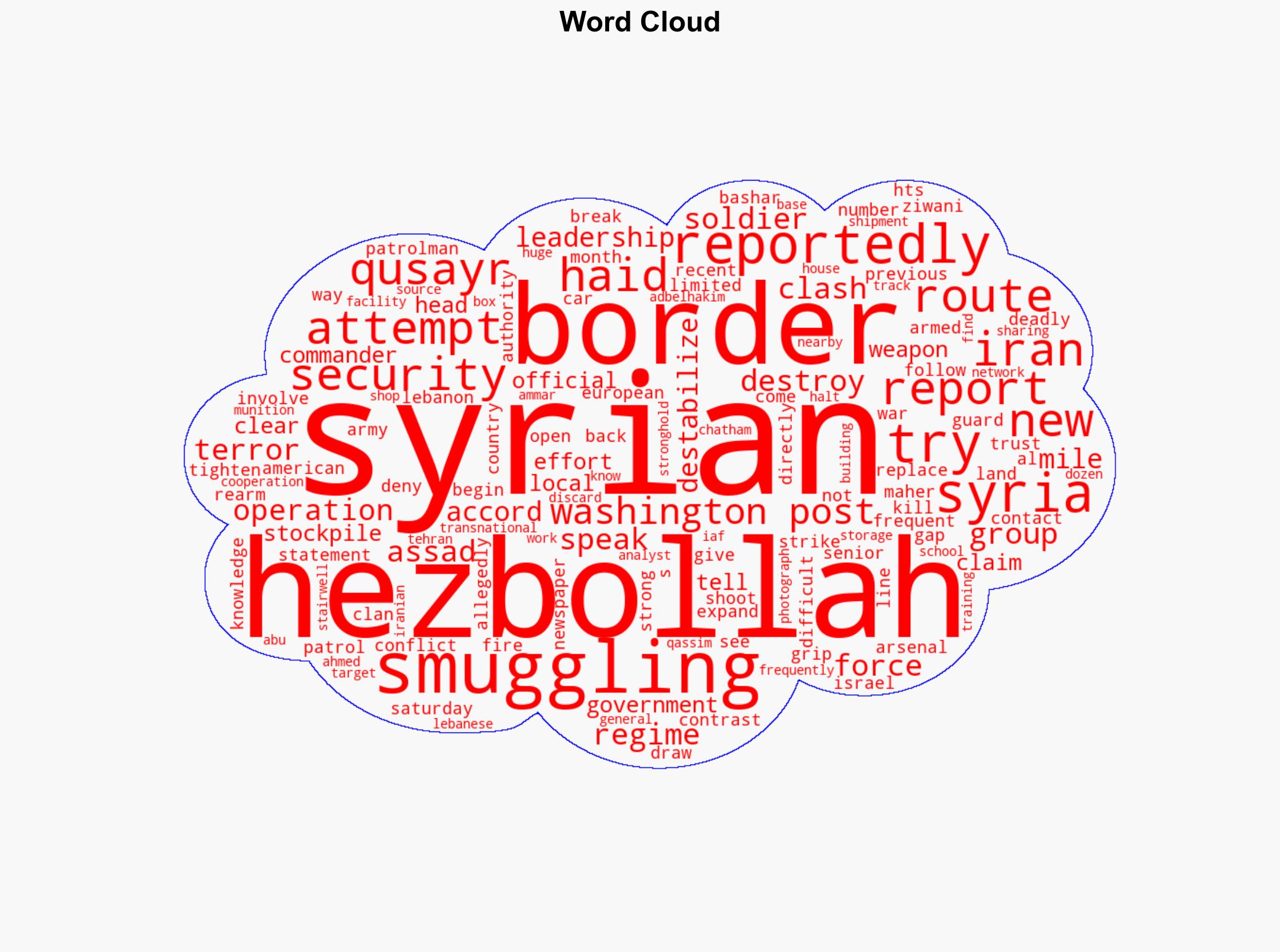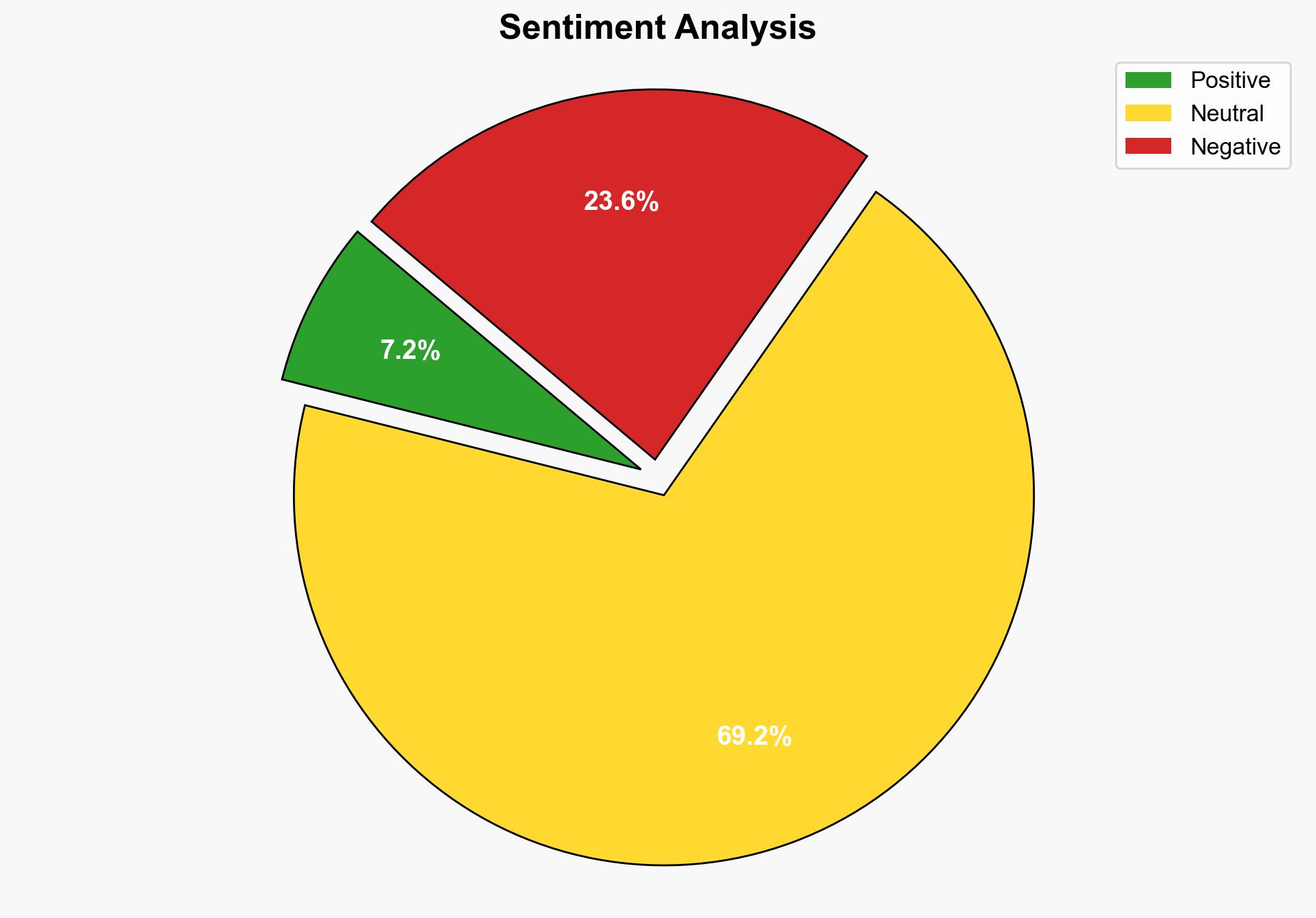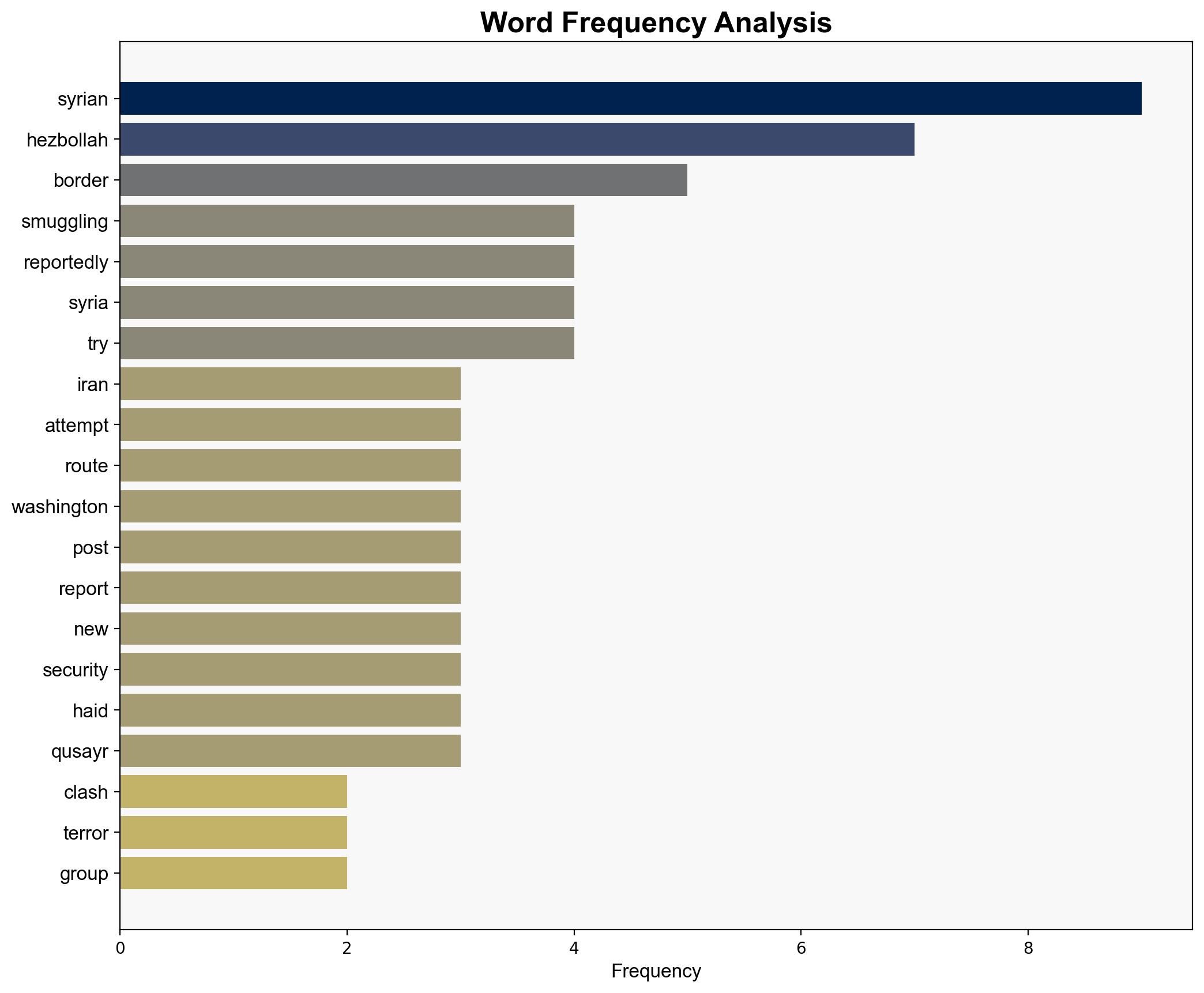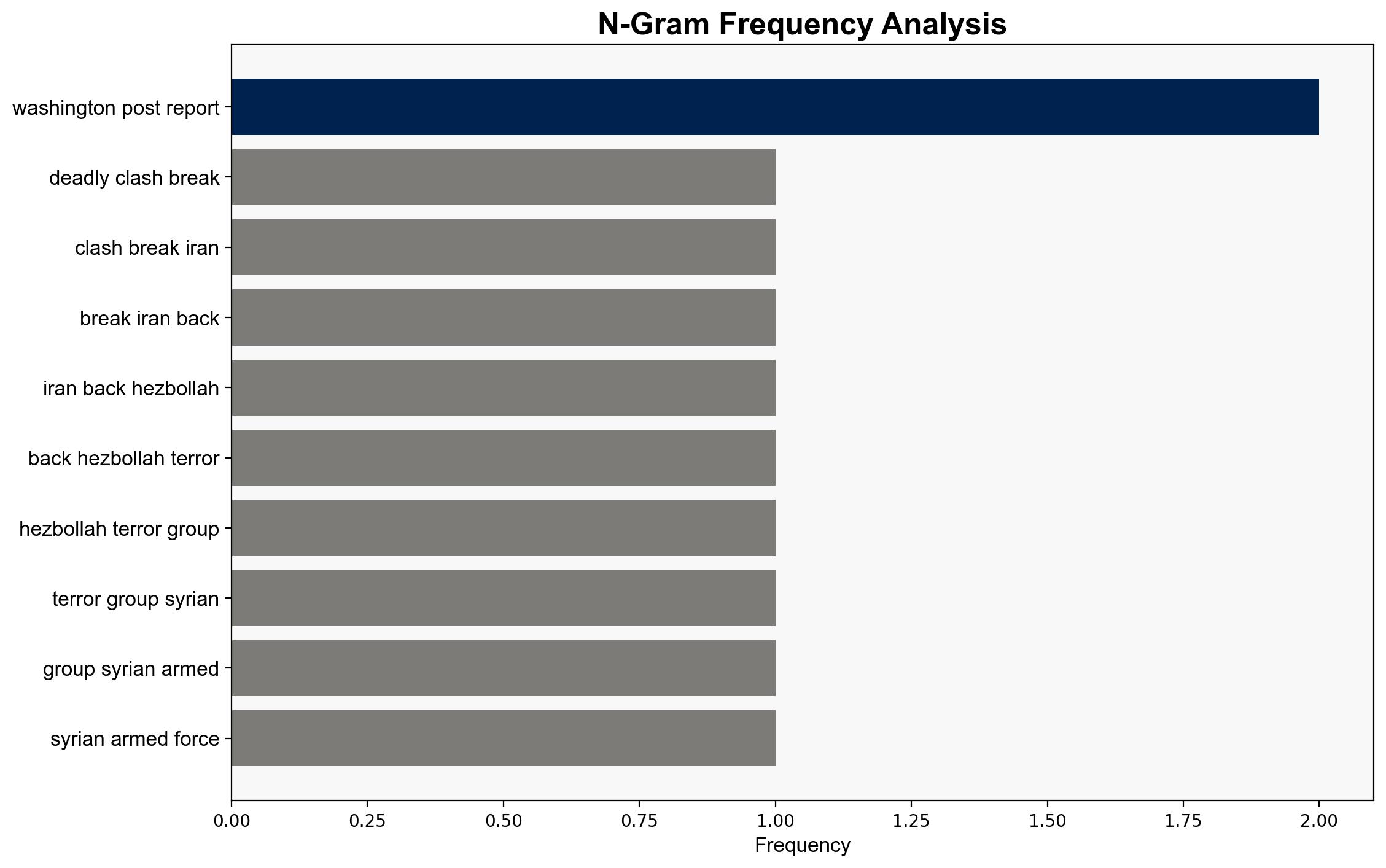Syria’s HTS Hezbollah clash over Iranian smuggling routes – The Jerusalem Post
Published on: 2025-04-12
Intelligence Report: Syria’s HTS Hezbollah Clash Over Iranian Smuggling Routes – The Jerusalem Post
1. BLUF (Bottom Line Up Front)
Recent clashes between Hezbollah and Syrian armed forces have intensified over control of smuggling routes previously utilized during the Assad regime. These routes are crucial for Hezbollah’s rearmament efforts following significant losses in its conflict with Israel. The situation poses a threat to regional stability, with Iran reportedly expanding its influence in Syria to destabilize the new HTS government. Immediate attention is required to address the security of the Syrian-Lebanese border and mitigate the potential for further escalation.
2. Detailed Analysis
The following structured analytic techniques have been applied for this analysis:
General Analysis
The conflict between Hezbollah and Syrian forces centers around control of strategic smuggling routes. Hezbollah’s efforts to rearm are hindered by Syrian patrols, which have faced frequent attacks. The Syrian government, under new leadership, is attempting to secure the border with Lebanon, but faces challenges due to Iran’s alleged involvement in destabilizing efforts. The discovery of Iranian weapons stockpiles near the border underscores the complexity of the situation.
3. Implications and Strategic Risks
The ongoing clashes present significant risks to regional stability and national security. The potential for escalation could impact neighboring countries and disrupt economic activities. Iran’s involvement suggests a broader geopolitical strategy that could further destabilize the region. The security of smuggling routes remains a critical concern, with implications for both local and international stakeholders.
4. Recommendations and Outlook
Recommendations:
- Enhance border security measures to prevent the movement of arms and personnel.
- Engage in diplomatic efforts to address Iran’s influence in the region and promote stability.
- Consider technological advancements in surveillance and intelligence gathering to monitor smuggling activities.
Outlook:
Best-case scenario: Successful diplomatic interventions lead to a reduction in hostilities and improved border security.
Worst-case scenario: Escalation of conflict results in broader regional instability and increased involvement of external actors.
Most likely scenario: Continued skirmishes with intermittent diplomatic efforts, maintaining a fragile status quo.
5. Key Individuals and Entities
The report mentions significant individuals and organizations involved in the conflict:
- Maher Ziwani – Involved in border security operations.
- Haid Haid – Analyst tracking smuggling routes.
- Ahmed Adbelhakim Ammar – Head of security for Qusayr.
- Samer Abu Qassim – Head of general security for Qusayr.





